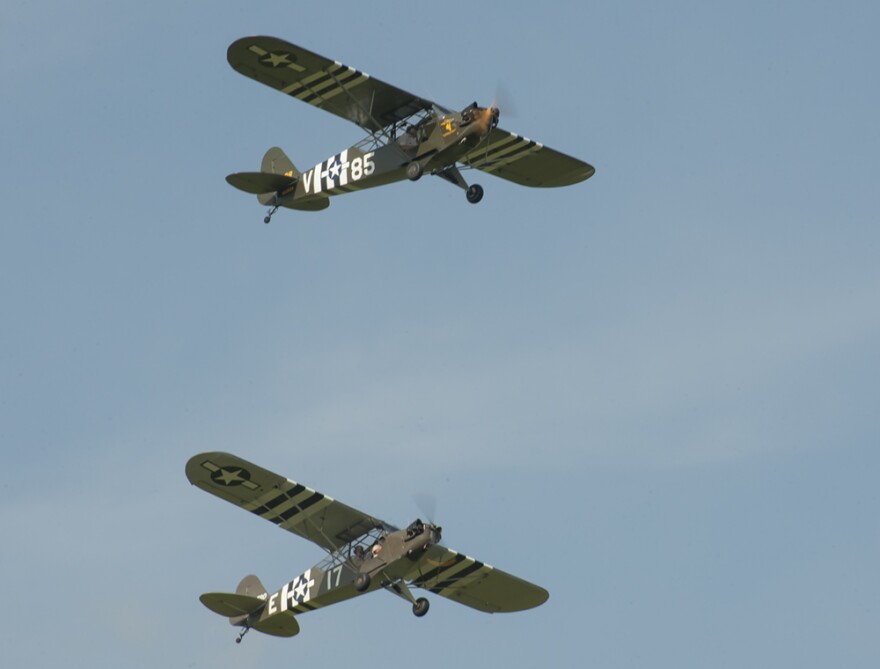Last week WYSO's aviation commentators, Paul Glenshaw and Dan Patterson, teamed up to cover the World War II Flyover in Washington DC. A parade of privately owned vintage warbirds celebrated the 70th of VE Day – the victory in Europe. Paul recorded voices and Dan took photographs to bring us this impression of the event.
The Flyover took place on a beautiful spring day. Ceremonies at the World War II memorial preceded the Flyover, which brought the airplanes straight up the National Mall.
The crowd was huge, with people of all ages and types mingling, and waiting for the airplanes to arrive. There were plenty of aviation fans, from two-year-old Hudson Shapiro, who already knows the B-29 named “Fifi,” to retired Marine Mark Reagan, decked out in a vintage marine uniform to Air Force Master Sergeant Danielle Harmon.
“I’m probably going to be in tears," she said ahead of the Flyover. "Those aircraft are the birth of my service. We’ve been around 68 years this September, and we’ve changed the face of warfare."
We met some folks form the Dayton area too, including Rebecca and Robert Ljungren.
“Being close to Dayton, Ohio, and Wright-Patterson Air Force Base, I’ve grown up going to that museum. So seeing all those planes, sitting there on the ground, and being able to see them today up in the air is gonna be pretty cool.”
Dean Alexander, Superintendent of Dayton Aviation Heritage National Historical Park, was there and said, "Every airplane that flies today has a basic concept that originated in Dayton, Ohio."
There were also plenty of people there who experienced World War II firsthand. We met Ed Edelsack, sitting in a wheel chair in the shade and being attended to by younger Air Force personnel.
“I was with the 11th Armored Division—part of Patton’s Third Army—and fought in the Bulge. My field is physics. So I helped in building the bombs that destroyed Hiroshima and Nagasaki.”
We asked him if it was important for younger generations to understand World War II.
“Absolutely important," he replied. "That’s why we’re doing this. Wars never really solve any problems. They create other problems."
About ten minutes after twelve, the airplanes began to arrive. Everyone was on their feet. Wave after wave came by, starting with small trainers, and then proceeding through all the major phases of the war—from Pearl Harbor to Hiroshima.
Then we met Bonnie Tyler standing alone at the base of the Washington Monument, and scanning her airplane spotter guide. She was trying to figure out which one was her father’s plane.
“My Dad is still alive, age 97. He flew a P-51 Mustang in the Battle of the Bulge. So that’s what I’m looking for.”
She actually remembered him coming home from the war. “And I can remember him coming into the bedroom, and he had his uniform on, and I said to him, with all respect, ‘You’re awfully short.’ [Laughs] And of course that’s why he was a fighter pilot. He was a small man.”
She had never seen a P-51 fly. In a few minutes a formation of four of them roared by.
After the world’s only flying B-29 rumbled by, the flyover’s final act arrived. It was the missing man formation. Four fighters approached as taps sounded. The crowd got very quiet as one of the fighters pulled up and away, as the others continued straight ahead, commemorating all those lost.
Aviation programming on WYSO is supported in part by the National Aviation Heritage Alliance and The Air Force Museum Foundation.



